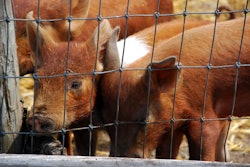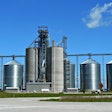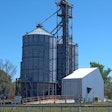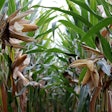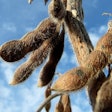
3月31日,美国农业部发布的估计soybean stocks as of March 1. Typically, the most interest in the quarterly stocks estimates is focused on corn because these reports reveal the apparent pace of feed and residual use during the previous quarter and that USE is a very large component of total corn consumption. While seed, feed, and residual use of soybeans is a smaller component of total consumption, there has been enough variation in revealed consumption to provide market surprises from time to time. The March 1 soybean stocks estimate this year may be more important than is normally the case due to the rapid pace of U.S. exports, concerns about the size of the South American harvest, and prospects for generally tight stocks at the end of the marketing year.
Anticipating the size of the March 1 stocks estimate starts with the USDA estimate of stocks held on December 1, 2013 plus imports during the quarter. An estimate of consumption during December, January, and February is subtracted from that total in order to estimate stocks as of March 1. Consumption occurs in three categories: exports; domestic crush; and domestic seed, feed, and residual use. Stocks on December 1 were estimated at 2.148 billion bushels. Census Bureau estimates of imports in December and January totaled 5 million bushels, so the total for the quarter may have been near 8 million bushels, resulting in a total supply of 2.156 billion bushels. The Census Bureau also provides the export estimates used in the USDA's supply and demand balance sheets. However, those estimates are currently only available through January 2014. An estimate of exports for the entire quarter is based on a combination of Census Bureau estimates through January and USDA estimates which are available for the entire quarter. USDA export inspection estimates for the December-February quarter totaled 703 million bushels. However, Census Bureau estimates for December and January exceeded the inspection estimates by 16 million bushels. Assuming that margin persisted through February, exports for the quarter were near 719 million bushels.
Historically, the estimate of the size of the domestic crush was also based on monthly Census Bureau estimates. Those estimates were discontinued in July 2011. Monthly and quarterly estimates of the crush are now based on National Oilseed Processors Association (NOPA) monthly estimates of crush by its member firms and the historical relationship between those estimates and the Census Bureau estimates. That procedure results in an estimate of 486 million bushels for the crush during the December-February quarter.
During the previous 10 marketing years, the magnitude of apparent seed, feed, and residual use of soybeans during the second quarter of the year (December-February) ranged from -42.4 million bushels to 88.3 million bushels. However, that estimate is not independent of the magnitude of apparent use in the first quarter of the marketing year. That is, unusually large (small) estimates of use during the first quarter have tended to be at least partially offset by unusually small (large) estimates in the second quarter. Making an estimate of use during the second quarter of the year, then, is conditioned on the magnitude of apparent use in the first quarter. Still, the total for the two quarters over the past 10 years was in a very wide range, from 124 million to 195 million bushels. The average was near 165 million bushels. Our calculation of use in this category during the first quarter of the 2013-14 marketing year was a record large 187 million bushels. That estimate points to a small forecast for the second quarter. If the total for the two quarters was near the 10-year average of 165 million bushels, second quarter use would have been near -22 million bushels.
The estimates of exports and domestic crush presented here along with average feed, seed, and residual use during the first half of the 2013-14 marketing year would point to March 1 soybean stocks of 973 million bushels. However, an estimate that differs by as much as 25 million bushels in either direction from that estimate probably should not be considered a surprise given the historic variation in feed, seed, and residual use during the first half of the marketing year.
The magnitude of feed, seed, and residual use of soybeans during the first half of the marketing year is sometimes used to anticipate whether the USDA will ultimately alter the estimated size of the previous year's harvest. A large (small) level of use, for example, might suggest that the crop was over (under) estimated. While use during the first half of the year has varied considerably, it is not a good predictor of use during the last half of the year. That use has ranged from -99 million to 40 million bushels and is not highly correlated to use during the first half of the year. As a result, the magnitude of use during the first half of the marketing year provides very little information about the likelihood of a change in the production estimate.
Issued by Darrel Good
Department of Agricultural and Consumer Economics
University of Illinois
Also available at:
http://farmdoc.illinois.edu/marketing/weekly/html/031714.html






